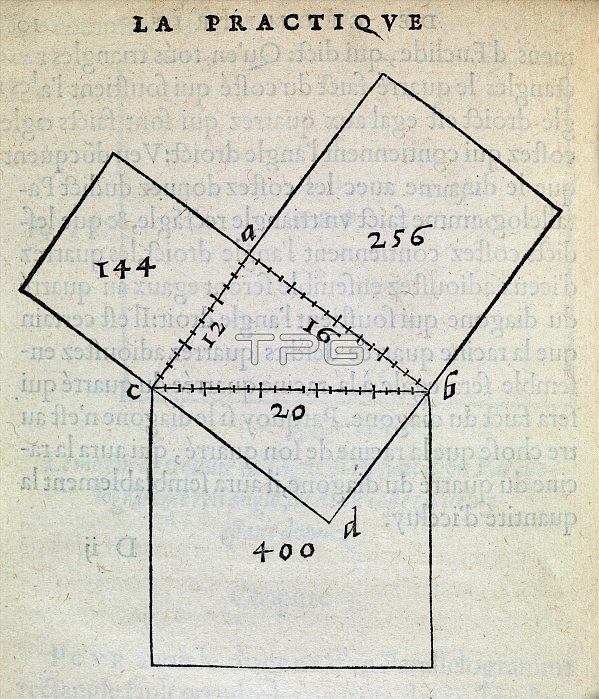
Pythagorean theorem, 16th century. This theorem, named for 6th-century BC Ancient Greek mathematician Pythagoras, states that in a right-angled triangle, the sum of the square of the hypotenuse (the side opposite the right angle) is equal to the sum of the squares of the other two sides. This diagram shows the squares for a triangle with sides in the ratio 3:4:5 (here, the actual unit lengths are 12, 16 and the hypotenuse of 20). The squares 144 and 256 add up to the square of the hypotenuse: 400. A side-based right-angled triangle, this is the simplest example of a Pythagorean triple. From 'La practique de geometrie' (1575) by Jean des Merliers.
| px | px | dpi | = | cm | x | cm | = | MB |
Details
Creative#:
TOP11721877
Source:
達志影像
Authorization Type:
RM
Release Information:
須由TPG 完整授權
Model Release:
NO
Property Release:
NO
Right to Privacy:
No
Same folder images:

 Loading
Loading